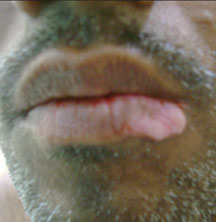The 2018 Sexually Transmitted Diseases (STD) Surveillance Report highlights that rates of syphilis, chlamydia, and gonorrhea have surged for the fifth year. The disparity in STD infection rates for African-Americans compared to other populations remains. According to the study compiled by the Centers for Disease Control and Prevention (CDC):
Primary and Secondary Syphilis - In 2018, the disparity between primary and secondary syphilis rates for Blacks and Whites was 4.7 times greater for Black females compared to White females and 4.8 times greater for Black males compared to White males.
Gonorrhea - In 2018, gonorrhea rates are significant and concerning in all populations, but there is a clear disparity between Blacks and Whites with Black males rate 8.5 times that of White males and Black females rate at 6.9 times that of White females.
Chlamydia - The rate of reported chlamydia cases among Black females was five times the rate among White females (1,411.1 and 281.7 cases per 100,000 population, respectively). The rate of reported chlamydia cases among Black males was 6.8 times the rate among White males (952.3 and 140.4 cases per 100,000 population, respectively).
African-American Syphilis Rates Four Times Higher Than Whites According to New CDC Study
Health

“More emphasis must be placed on those issues that present barriers to prevention and care of not only STDs but other chronic diseases,: says Dr. Sandra Elizabeth Ford.

“More emphasis must be placed on those issues that present barriers to prevention and care of not only STDs but other chronic diseases,: says Dr. Sandra Elizabeth Ford.
The National Association of County and City Health Officials, Board Vice President, Sandra Elizabeth Ford, MD, MBA, said “Data highlighting the overrepresentation of sexually transmitted diseases in the African-American population is disappointing, but not shocking.”
The Howard University’s School of Medicine School graduate continued, “More emphasis must be placed on those issues that present barriers to prevention and care of not only STDs but other chronic diseases, such as poverty, and lack of insurance, as well as racism. Until we take a hard look at these factors, we will continue to see the broad inequities in diseases prevalence that we are currently observing.”
The Howard University’s School of Medicine School graduate continued, “More emphasis must be placed on those issues that present barriers to prevention and care of not only STDs but other chronic diseases, such as poverty, and lack of insurance, as well as racism. Until we take a hard look at these factors, we will continue to see the broad inequities in diseases prevalence that we are currently observing.”
Advertisers | Contact Us | Events | Links | Media Kit | Our Company | Payments Pier
Press Room | Print Cover Stories Archives | Electronic Issues and Talk Radio Archives | Writer's Guidelines






